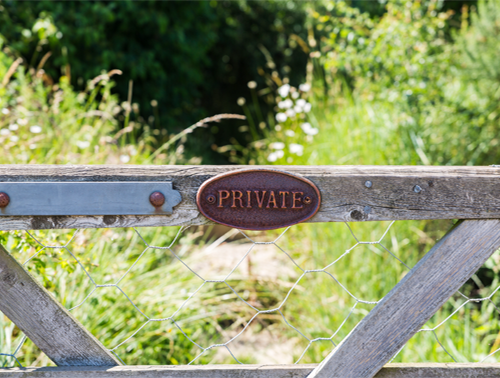
If you are a landowner, you may have come across the term ‘public right-of-way’ before. A public right of way is an area of land that is open to the public for passage, such as a path or roadway. In some cases, this may have been established through legal means, which is both complicated and frustrating for property owners.
What is a public right-of-way claim?
A public right-of-way claim is a legal procedure that enables the public to utilise a specific portion of privately owned land for passage. Such claims can be initiated by government entities or individuals, usually when there is no established public access to a specific area. Once a claim is filed, the landowner is obligated to grant public access to the claimed portion.
When someone makes a public right-of-way claim, they are essentially asserting that they have a legal right to use and enjoy the pathway or route in question, even if it is located on private property. This claim is often made when a landowner attempts to block or restrict public access to a route that has been used by the public for a significant period of time.
How are these claims made?
The legal process for asserting a public right-of-way claim can vary depending on the jurisdiction, but it generally involves gathering evidence of the public’s historic use of the route, such as witness testimonies, historic documents, or other forms of documentation.
The claimant may then present this evidence in court or to the relevant authorities to seek recognition and protection of the public right of way. If the claim is successful, the public right of way may be officially recognised and protected by law.
Public right-of-way claims can be established through various legal means:
Through a long time period
When someone uses a portion of private land for a specific period of time without the owner’s permission, rights of way can occur. This is known as prescriptive easements. If this use is continuous and open, the user may be able to claim a right-of-way easement.
Voluntary
When a landowner voluntarily gives a portion of their land to the public for a specific use, such as a road or pavement, this is known as dedication. This dedication can be done through a written agreement or by simply allowing public use of the land for an extended period.
Preventing public right-of-way claims
If you own land and want to prevent a public right-of-way claim in the future, there are several things you can do. First, it is necessary to be aware of any existing rights of way or public access points on your property. This can be done by reviewing your property survey or consulting with a real estate solicitor.
If there are no existing public access points on your property, you can take steps to prevent claims from being established. For example, mark the boundaries of your property with fences, signs, or other barriers. This will prevent people from entering your land and claiming a right of way.
How you can protect your property
Public right-of-way claims can be a complicated and frustrating process for landowners. By understanding how these claims are established and taking steps to prevent them, you can protect your property rights and avoid potential legal disputes.
If you have questions about public right-of-way claims or other property issues, it is always best to consult with a property solicitor for guidance.
For legal advice regarding public right-of-way claims, contact our team at Howell Jones.